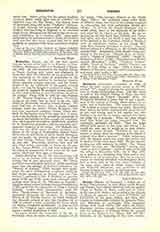

Berissa (BERISA or VERISSA), a titular see of Pontus Polemoniacus, in Asia Minor which Kiepert and Ramsay have rightly identified with the modern village of Baulus or Bolus, southwest of Tokat. In the time of St. Basil it was included in the Diocese of Ibora, as appears from letters LXXXVI and LXXXVII of the great bishop, but soon after became an independent bishopric in Armenia Prima, with Sebasteia as metropolis. This important change took place before 458, when its bishop, Maxentius (written wrongly Auxentius), subscribed with his colleagues of Armenia Prima the synodal letter to the Emperor Leo (Mansi, XII, 587-589). Hierocles, at the beginning of the sixth century, does not treat it as an independent city; but it is mentioned as such by Justinian in a Novella of 536, among the cities of Armenia Secunda. It must be remembered that this emperor, when creating the province of Armenia Quarta in 536, gave to Armenia Prima the name of Armenia Secunda, without altering, however, the established ecclesiastical organization, so that Berissa remained a suffragan see of Sebasteia. Among its bishops may be mentioned Thomas, who was present at the fifth ecumenical council, in 553 (Mani, IX, 175), and another at the sixth in 680 (ibid., XI, 676). It appears still later in the “Notitiaae Episcopatuum” as suffragan to Sebasteia, and its name is written sometimes B?riss?, sometimes Beriss?; Meriss? and K?riss? are merely palmographical mistakes. Berissa was a Latin bishopric as late as the fifteenth century, when Paul II appointed the Franciscan Libertus de Broehun to succeed the deceased bishop, John (Wadding, Annales Minorum, VI, 708).
L. PETIT

